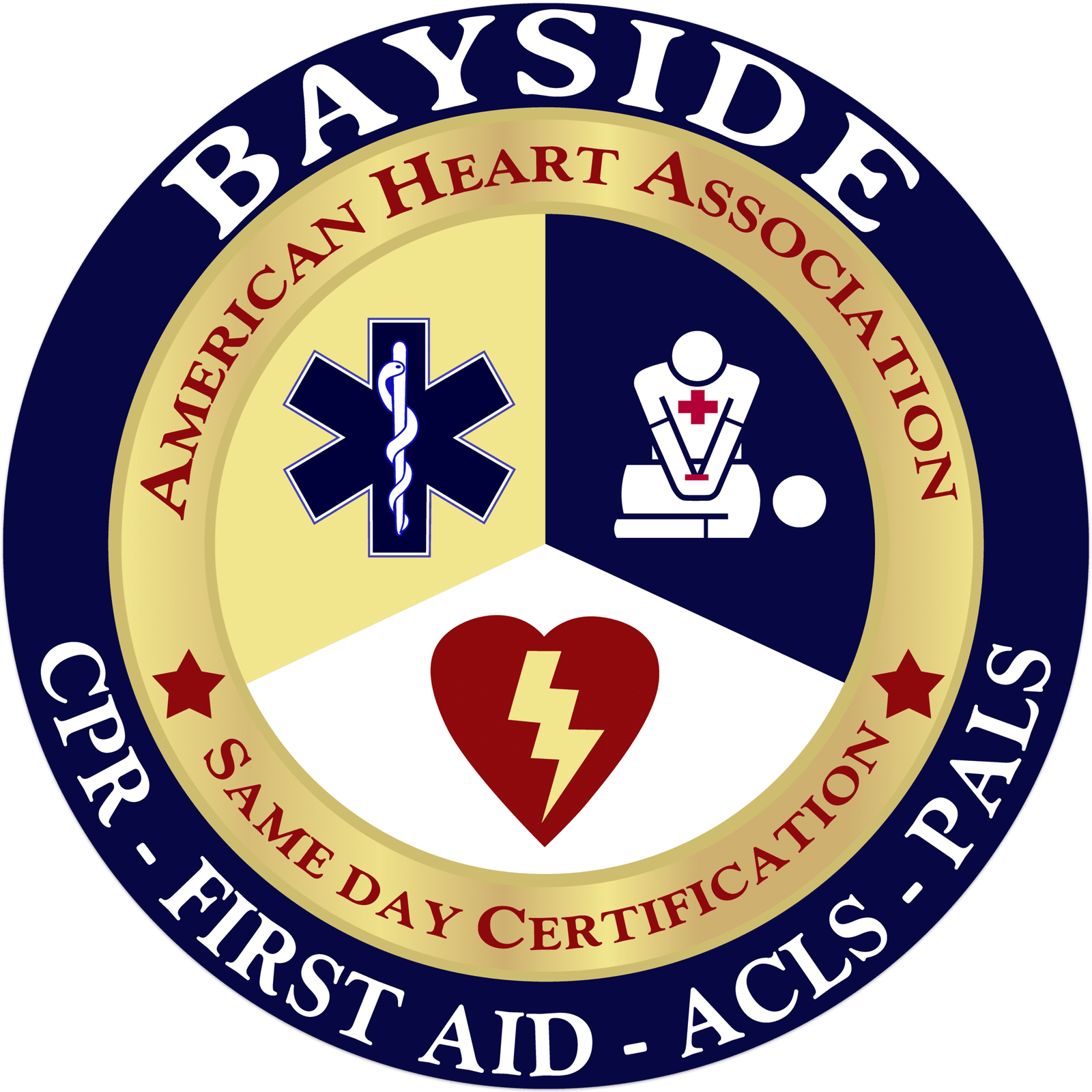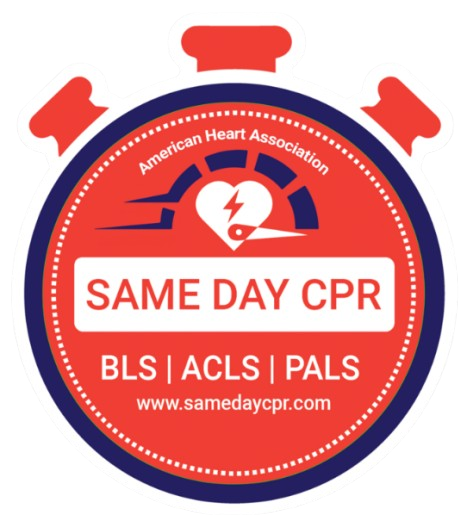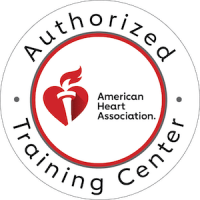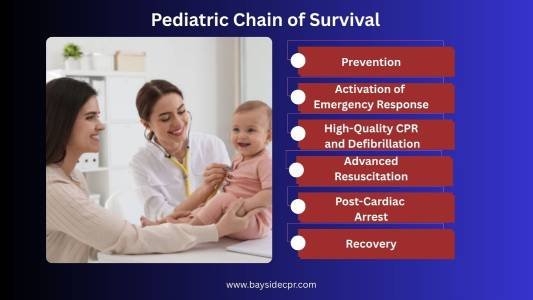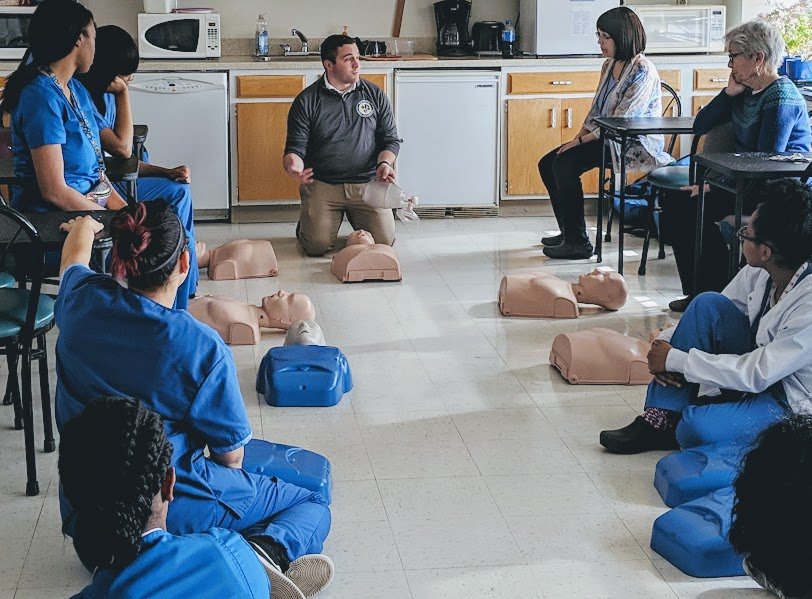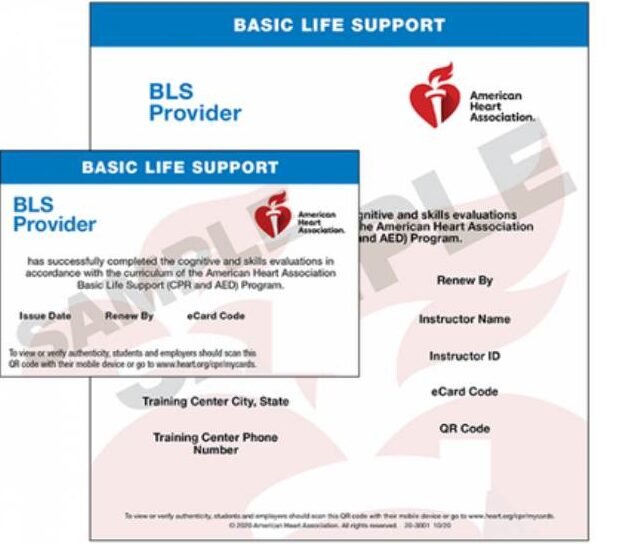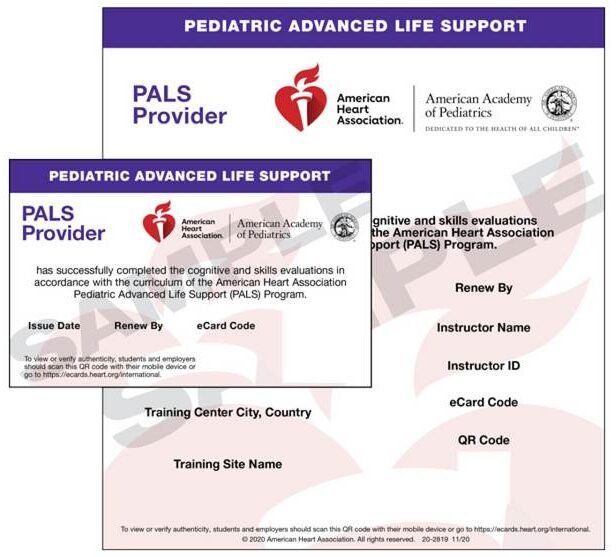The Pediatric Chain of Survival for BLS is a straightforward, step-by-step approach, often referred to as the pediatric cardiac arrest algorithm, to help children in emergencies, especially during cardiopulmonary arrest or breathing problems. It starts with recognizing the emergency quickly and calling for help right away. Then, it focuses on providing prompt CPR to keep blood and oxygen flowing until professional help arrives. The next key step is using an AED, if available, to restore a normal heart rhythm. After that, advanced medical care follows, which includes rapid transport to a hospital and specialized treatment. Think of it as a series of linked actions that, when done swiftly and correctly, can make a real difference in saving a child’s life.
BLS: Basic Life Support, AED: Automated External Defibrillator, CPR: Cardiopulmonary Resuscitation
1. Pediatric Chain of Survival: Key Steps and Why They Matter
The Pediatric Chain of Survival outlines the critical actions needed to improve outcomes in children experiencing cardiac emergencies. Each step plays a vital role in giving young patients the best chance at survival and recovery.
1a. Prevention
Preventing emergencies is the most important step in keeping children safe. This means actively supervising children, ensuring car seats are used correctly, and keeping hazardous substances and small objects out of their reach. Educating parents, caregivers, and teachers about common choking hazards, safe play practices, and recognizing early signs of illness or distress is essential. By addressing these risk factors, many emergencies can be avoided altogether, reducing the chances of cardiac arrest or respiratory failure in children.
1b. Early Recognition and Activation of Emergency Response
Recognizing the signs of a medical emergency quickly and calling 911 immediately is crucial to saving a child’s life. Unlike adults, children often experience cardiac arrest due to respiratory problems rather than primary heart disease. This means early recognition of trouble breathing, altered consciousness, or collapse can lead to faster intervention. Prompt activation of emergency services gets professional responders en route without delay, which is vital because every minute counts. Knowing what to look for and acting with confidence can make a significant difference in the child’s chances of survival.
1c. High-Quality CPR and Defibrillation
When a child collapses and isn’t breathing, starting CPR immediately with age-appropriate technique is essential. High-quality chest compressions at the correct depth and rate, combined with rescue breaths, help maintain blood flow and oxygen delivery to vital organs like the brain and heart. Since children have different anatomical and physiological characteristics compared to adults, CPR must be tailored to their size and age for effectiveness. Additionally, if an AED is available, it should be used as soon as possible with pediatric pads or energy settings adjusted accordingly. Early defibrillation can restore a normal heart rhythm and greatly improve survival odds.
1d. Advanced Resuscitation
Once emergency medical services arrive, they provide advanced care that goes beyond basic CPR. This includes securing the airway, administering medications, and using specialized equipment to stabilize the child’s heart and breathing. Advanced resuscitation aims to support vital functions and address the underlying cause of the emergency, whether it’s respiratory failure, cardiac issues, or trauma. Skilled intervention during this phase helps prepare the child for safe transport to the hospital, where further specialized treatment is available.
1e. Post-Cardiac Arrest Care and Teamwork
After successful resuscitation, post-cardiac arrest care focuses on protecting the brain and other organs to improve long-term outcomes. Medical teams follow structured protocols, such as the Pediatric ROSC Post-Resuscitation Care Algorithm, which includes closely monitoring vital signs, managing oxygen levels, and treating any reversible causes of the arrest. This phase requires excellent teamwork and communication between first responders, EMS, and hospital staff to ensure continuous, coordinated care. Such collaboration reduces errors, streamlines treatment, and provides the best chance for recovery.
ROSC: Return of Spontaneous Circulation
1f. Recovery and Compassionate Support
Recovery is an ongoing process that extends well beyond hospital discharge. Children often need continued medical follow-up, rehabilitation, and emotional support to regain strength and resume normal activities. Families also benefit from guidance and counseling to cope with the trauma and adjust to any changes. Preparedness through regular training builds confidence and competence among caregivers and responders, ensuring they can provide compassionate, effective care when emergencies happen. Raising public awareness about pediatric emergencies empowers communities to support children and families in critical moments and throughout their recovery journey.
2. Common Causes of Pediatric Cardiac Arrest
When it comes to pediatric cardiac arrest, the story is often a bit different from that in adults. Most of the time, it starts with respiratory failure; kids have trouble breathing first, which then leads to their heart stopping. Primary cardiac causes, like heart defects or arrhythmias, are less common but still important to know about.
Infections like severe pneumonia, choking on a small object, drowning incidents, or trauma from accidents can all set off this chain reaction, making breathing difficult and eventually causing the heart to fail. Understanding these causes is really key because it shapes how we respond. Knowing whether the problem began with breathing or the heart helps caregivers and medical teams act fast and in the right way to give these kids the best chance of recovery.
3. Common Mistakes in Pediatric Resuscitation and How to Avoid Them
When it comes to pediatric resuscitation, a few common mistakes can make a difference in outcomes, but the good news is they’re often easy to avoid.
3a. Over/Under Compression Depth
When performing chest compressions on a child, finding the right depth is super important. Pressing too hard can cause injuries like broken ribs or damage to internal organs, which we want to avoid. On the other hand, not pressing deep enough means the blood isn’t circulating well, which reduces the chances of getting oxygen to the brain and vital organs. That’s why it’s crucial to aim for the recommended compression depth based on the child’s size, usually about one-third the depth of the chest. Getting this balance right helps give the best possible chance of keeping blood flowing during CPR.
3b. Incorrect Rescue Breath Technique
When giving rescue breaths, getting the technique right really matters. Breathing too fast or too slow can mess with how much oxygen gets into the child’s lungs, which can make a big difference in their recovery. Another common mistake is not sealing the airway properly; if there’s a gap around the mouth or nose, the breaths won’t go in effectively, and that means less oxygen reaches the lungs. The best approach is to give steady, gentle breaths just enough to make the chest rise visibly. This helps ensure the oxygen gets delivered where it’s needed without causing harm.
3c. Delayed activation of EMS or AED use
Delaying the call to emergency services or waiting to use an AED can seriously lower a child’s chance of survival during cardiac arrest. Every minute counts, so the sooner you activate EMS, the better. Help arrives faster, and professionals can take over sooner. Using an AED early is just as crucial because it can quickly restore a normal heart rhythm, which gives the child a much better shot at recovery. That’s why it’s so important to call for help and use an AED as soon as you can during resuscitation; acting fast saves lives.
4. Legal and Ethical Considerations
Legal and ethical considerations are important aspects of providing care during pediatric emergencies. They help guide responders to act responsibly while protecting both the child and themselves.
4a. Good Samaritan Laws
Legal and ethical considerations play a big role when responding to pediatric emergencies. Good Samaritan laws are there to protect people who try to help in good faith, so as long as you’re doing your best and staying within what you’re trained to do, you’re usually shielded from legal trouble.
4b. Consent issues in Pediatric Emergencies
Consent can be a bit more complicated with kids because they often can’t make decisions for themselves. In emergencies, consent is usually implied, meaning it’s assumed that parents or guardians would want lifesaving care given right away.
4c. Reporting and Documentation
Accurate reporting and documentation after the event are crucial, not only to protect yourself legally but also to provide clear information for medical professionals who take over, ensuring the child gets the best follow-up care possible. Keeping these points in mind helps responders act confidently and responsibly.
5. Equipment and Resources for Pediatric Emergencies
Having the right equipment and resources tailored for children is essential in any pediatric emergency. Proper tools designed specifically for kids ensure that care is safe, effective, and timely when every second counts.
5a. Pediatric Emergency Kits
- Should include items specifically sized for children, like appropriately sized airway devices, masks, and endotracheal tubes.
- Must have pediatric-sized gloves, blood pressure cuffs, and IV access tools to ensure effective and safe care.
- Include emergency medications in child-appropriate dosages and easy-to-read dosing charts for quick reference.
5b. Importance of Age-Appropriate Equipment
- Children’s anatomy and physiology differ significantly from adults, so having the right-sized tools is crucial for effective treatment and avoiding injury.
- Schools, homes, and ambulances equipped with pediatric-specific gear are better prepared to respond swiftly to emergencies without delay or improvisation.
- Age-appropriate equipment supports proper airway management, medication administration, and monitoring, which can improve outcomes in pediatric emergencies.
5c. Accessibility and Training
- Emergency kits should be easily accessible and regularly checked to ensure all pediatric equipment is present and functioning.
- Staff and caregivers should be trained not only in CPR but also on how to use pediatric-specific equipment properly.
- The ready availability of the right tools can reduce anxiety and increase confidence during high-pressure situations involving children.
Empowering Life Saving Action with Pediatric Chain of Survival and BLS
The Pediatric Chain of Survival is a crucial roadmap that highlights the importance of swift, coordinated, and compassionate care at every step to give children the best chance of survival during emergencies. By understanding and practicing these life-saving actions from early recognition and calling for help to high-quality CPR and advanced care, we can make a real difference. At Bayside CPR, we’re here to empower you with BLS, PALS, ACLS, and CPR & First Aid training so you’re ready to respond confidently whenever a child’s life is on the line. Contact us today or visit our training center.
